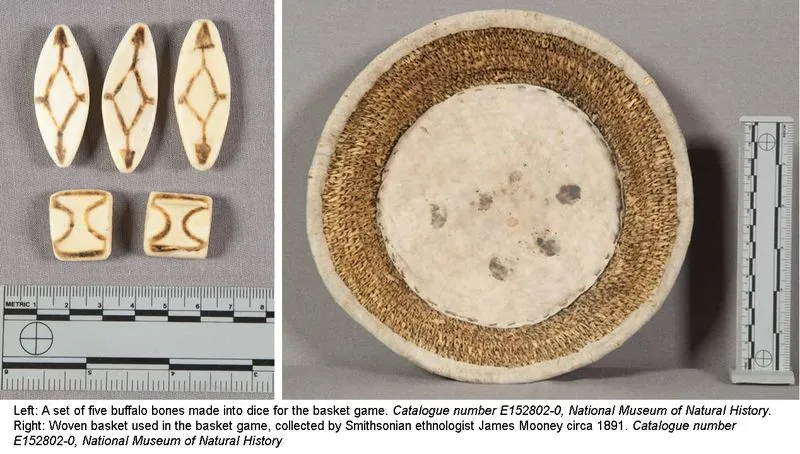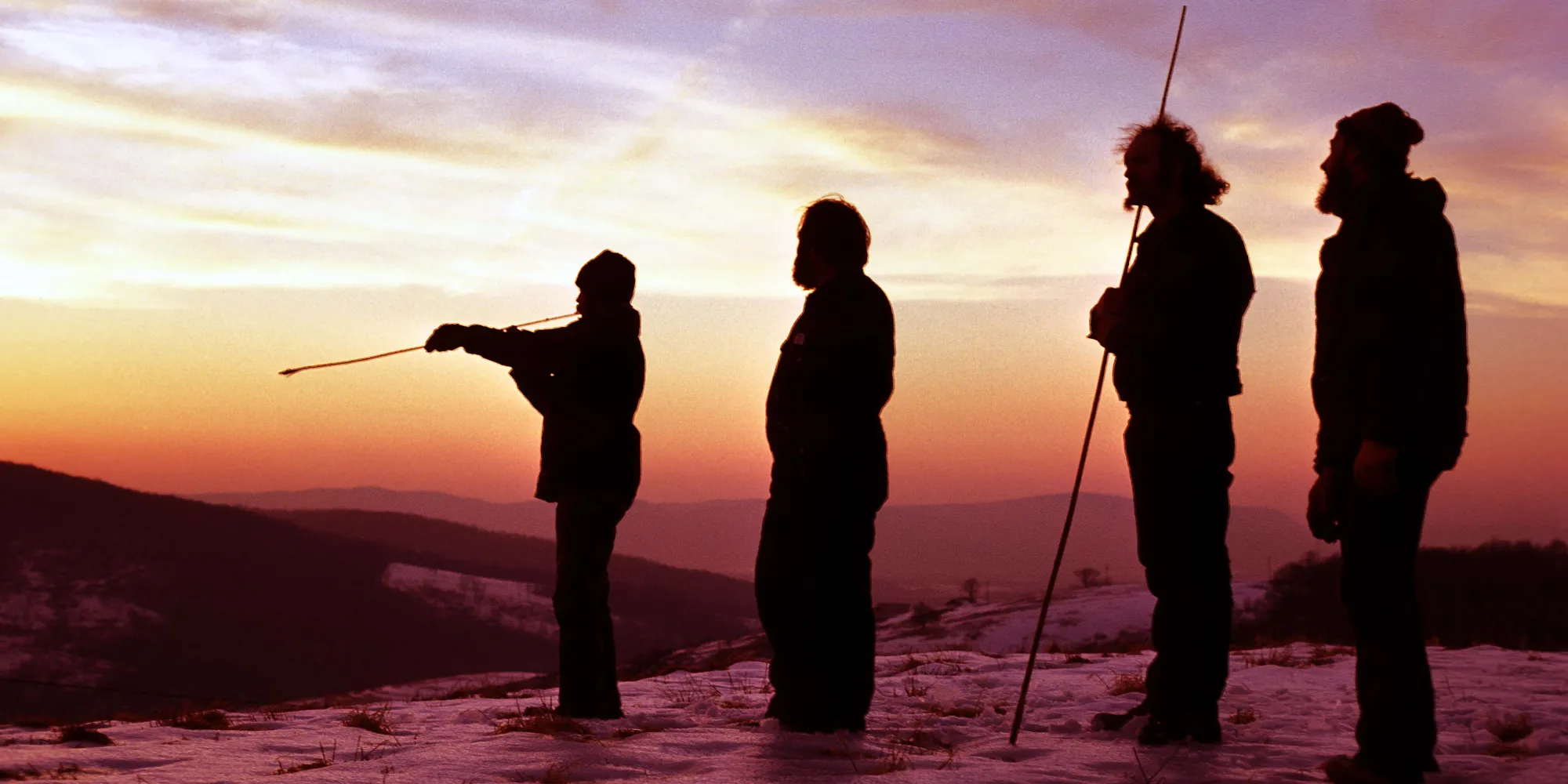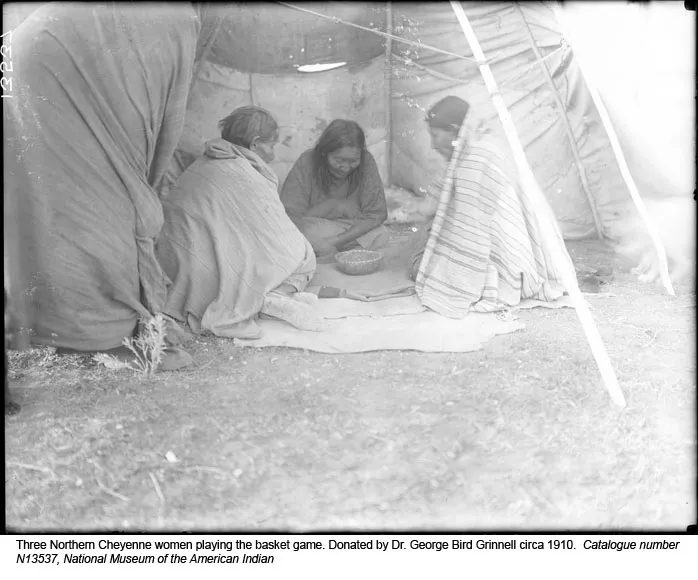
Search

News from Recovering Voices
Not Just for Fun: The Cultural Significance of Cheyenne Games
By: Catherine Stiers
11/12/2015
Everyone likes to play games, but are they more than just a way to pass the time? In a word, yes.

In November, Cheyenne members of the Cheyenne and Arapaho Tribes of Oklahoma conducted research as part of the Recovering Voices Community Research Program at the National Museum of Natural History (NMNH), in the museum’s Anthropology object collections and in its National Anthropological Archives (NAA), and in the collections of the National Museum of the American Indian (NMAI). The goal of the research visit was to access and study materials related to the Cheyenne language and culture, with a focus on games.
There are currently fewer than 100 fluent Cheyenne speakers, so members of the research team planned to use traditional games as a vehicle to transfer knowledge of the Cheyenne language and culture from one generation to the next.
Two Cheyenne games in NMNH and NMAI collections are known as the basket game, also known as the seed game, even though the seeds used are usually plum pits, and the wheel and stick game. Members of the Cheyenne research team studied these and many other objects in the Smithsonian collections during their research visit.
The basket game is played using a shallow bowl like the one pictured, 8 sticks, and five plum pits used as dice. Each plum pit has a different design on one side and is left blank on the other. There must be an even number of players, with each player identifying a partner on the opposing team to bet against. The pits are then placed in the basket. Next, a player shakes the basket, rolling the pits around. The pits are tossed out onto the ground and the turn is assigned a point value based on which designs are facing upwards. When a point value is assigned, the player will take away that number of sticks from her opponent.
According to tradition, only women are allowed to play the basket game, but today youth and adults, both female and male, learn to play the games to help preserve Cheyenne heritage and traditional knowledge.

Another significant game is the wheel and stick game. Although hoop rolling games have been around for many years throughout many societies, this game is especially significant to Cheyenne culture because it is briefly described in their story of how the buffalo became abundant.
The wheel and stick game requires three players. One player’s job is to roll a hoop quickly in front of the other two players. The two remaining players throw their poles at the hoop, trying to score as many points as possible by getting the poles stuck in the netting that covered the hoop. Depending on where the pole ends up, different point values are assigned.
Unlike the basket game, the wheel and stick games were not limited to only women; men and children played as well. Because of the nature of the game-good coordination and a fast reaction time are needed to be successful-it serves as more than just fun, but as practice for hunting.
The Cheyenne and Arapaho Tribes Culture and Heritage Program plans to incorporate the knowledge gained from their research here into its programs for tribal members interested in learning more about and participating in their heritage. In addition to including games, there are plans to incorporate information from this research visit into beadwork and other traditional knowledge classes and workshops.
While the team was in Washington, DC, Cheyenne researchers also worked with unpublished manuscripts in the National Anthropology Archives, which include Cheyenne narratives and vocabularies collected in the late 19th and early 20th centuries. At the same time, this community research visit helped the Smithsonian to expand its understanding of the collections by incorporating information from the team’s research discussions into the collections database.
The games in Smithsonian collections were significant not only in the past, but are even more important today and in the future since they help transmit Cheyenne heritage and language to a new generation.